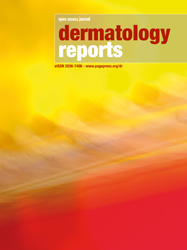The anxiety and depression disorder in adults with atopic dermatitis: experience of a dermatology hospital

All claims expressed in this article are solely those of the authors and do not necessarily represent those of their affiliated organizations, or those of the publisher, the editors and the reviewers. Any product that may be evaluated in this article or claim that may be made by its manufacturer is not guaranteed or endorsed by the publisher.
Authors
The objectives of this study are to identify the proportion of atopic dermatitis adult patients having anxiety and depression disorder and to measure the relationship between anxiety and depression disorder and characteristics of atopic dermatitis. A cross-sectional study with convenience sampling was conducted. Diagnostic criteria for atopic dermatitis were based on modified Hanifin and Raijka criteria and the severity of anxiety-depression disorder was evaluated using the hospital anxiety and depression scale. In this study, 208 patients were enrolled. The percentage of patients with anxiety and subthreshold anxiety were 11.1% and 34.1%, respectively. 5.3% of patients had depression and 39.4% of patients suffered from subthreshold depression. The proportion of patients with mixed anxiety-depressive disorder was 1.44%. Patients with severe atopic dermatitis were more likely to endure anxiety but not depression. Allergies or autoimmune diseases and scoring atopic dermatitis C were two independent risk factors of depression whereas edema and excoriation were two independent risk factors related to anxiety in atopic dermatitis patients. These findings suggest that atopic dermatitis is associated with anxiety and depression. Allergies, autoimmune diseases, pruritus, and insomnia had a correlation with anxiety and depression disorder.
How to Cite

This work is licensed under a Creative Commons Attribution-NonCommercial 4.0 International License.








